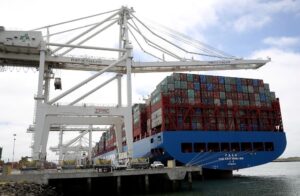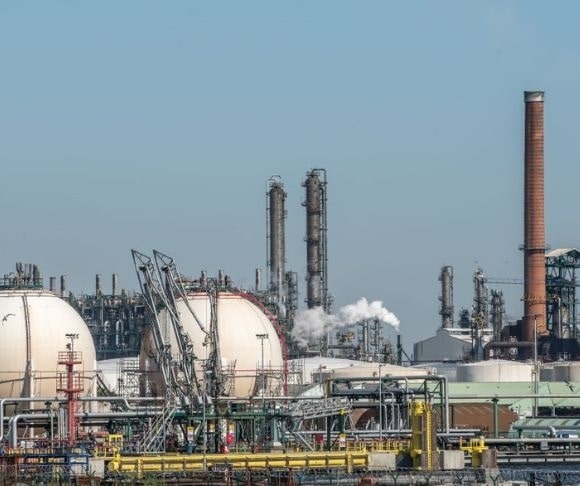The state of the crude oil market today is one gigantic confusing mess on par with James Joyce’s 1939 novel, Finnegan’s Wake. Like the lead character, Tim Finnegan, oil prices have dropped from the top of a ladder, broke their skull, died, and were resuscitated by participants attending the wake. In other words, rumors of oil’s death have been greatly exaggerated – or have they? Nobody knows the troubles black gold has seen in 2023, from recession fears to the big trouble in little China to the Middle East power players. What exactly is happening in international energy markets anyway?
We’ll Always Have OPEC Oil
Saudi Arabia, the kingpin of the Organization of the Petroleum Exporting Countries (OPEC), announced during a meeting in Vienna on June 4 that it would slash production by an additional one million barrels per day (bpd), lowering volumes to nine million bpd in July. OPEC and its allies, OPEC+, agreed to extend its planned crude output reduction of two million bpd intact for the rest of the year. This is in addition to the cartel’s extra drop of 1.6 million barrels, Riyadh’s 500,000-barrel-per-day decrease, and Russia’s decline of 500,000 bpd.
In overnight trading, oil prices had popped as much as 2.25%. However, by the end of the June 5 session, West Texas Intermediate (WTI) futures climbed just 0.6% to $72.15 a barrel on the New York Mercantile Exchange. Brent, the international benchmark for oil prices, rose at a tepid 0.8% to $76.71 per barrel on London’s ICE Futures exchange. In other words, the announcement did not do much for crude futures, and, as a result, both contracts are down on the year.
But if these groups, which account for roughly half of the world’s production, are removing supply from the global market, why wouldn’t oil prices rally much higher? It must be the dreaded R-word again.
Got Recession?
Investors were as surprised as Boston Bruins fans in the first round of the 2022-23 Stanley Cup playoffs when the latest US economic data were released. The Institute for Supply Management’s (ISM) Services Purchasing Managers’ Index (PMI) weakened to 50.3 in May, down from 51.9 in April and below the consensus estimate of 52.2. The PMI sub-indexes reported declines across the board: employment, new orders, business activity, and prices. This is a crucial gauge because it measures the trend of the broader sector.
Moreover, factory orders were abysmal. The Census Bureau reported that factory orders rose 0.4% in April, down from a downwardly revised 0.6% in March and below the market forecast of 0.8%. In addition, core factory orders, which strip transportation, tumbled 0.2% in April. This represented the third straight month of falling core factory orders, down 2.2% year-over-year.
Overall, the latest prints exacerbated recession talk or, at the very least, fueled fears of a stagnating economy. This impacts the energy markets because a downturn will weigh on demand. Unfortunately for Texas Tea investors, China might be unable to bail out the institutional or armchair bull traders.
The China Syndrome

(Photo by Justin Sullivan/Getty Images)
When China reopened its economy after abandoning most of its pandemic-related public health restrictions amid nationwide protests, investors were optimistic that this would be exceptionally bullish for the global economy, particularly oil. Moreover, since Beijing is the world’s largest crude importer, the world’s second-largest economy would serve as a supply disruptor thanks to strong demand from its reopening.
Not this time.
In the past month, this is what we have learned about the Chinese economy. In April, imports tanked 7.9%, and exports increased at a tepid 8.5% pace, according to the General Administration of Customs. The National Bureau of Statistics’ Manufacturing PMI fell to 48.8 in May, down from 49.2 in April. The non-manufacturing PMI eased from 56.4 to 54.5. The good news? Market observers anticipate that Beijing will inject more stimulus into the economy to accelerate growth and match state forecasts.
To make matters worse, China’s crude imports plunged 16% month-over-month and 1.4% year-over-year to 10.36 million bpd in April.
And Then There Was Biden
Since July 2022, US crude production has stagnated and remains below the pre-crisis high of 13.1 million bpd. The number of active US rigs drilling for oil has slumped to a 13-month low. The country’s emergency stockpiles – the Strategic Petroleum Reserve – have fallen for nine consecutive weeks, sliding to 355.436 million barrels. This is down more than 44% since President Joe Biden took office. Gasoline prices are up 10% year-to-date and have soared 42% since Biden became president.
While the president’s policies have not helped mitigate inflationary pressures in the energy sector, one market analyst also points his finger at the Federal Reserve.
“The Fed’s aggressive action could discourage investment in oil and gas production as well as other commodities, creating a structural shortage that would keep inflationary pressures high for the long term,” wrote Phil Flynn, an energy strategist at the PRICE Futures Group, in a research note. “The Federal Reserve’s blunt instrument of raising interest rates can’t drill an oil well, plant a wheat field, nor can it operate a factory. Yet it could stop those who do because they cannot get or afford credit.”

(Photo by Jonathan Raa/NurPhoto via Getty Images)
Although the futures market’s expectations have shifted between a rate hike and a rate pause in recent weeks, the latest data suggest investors are pricing in a skip at the June Federal Open Market Committee policy meeting.
$100 Again?
For much of 2023, economists have widely expected that a barrel of oil would soon cost $100 again. Now that the Saudis have removed one million barrels a day from the worldwide energy market, could WTI or Brent touch triple-digit territory again? This is what the wisest men and women on Wall Street are saying – and they are never wrong! But it all depends on the R-word. The trends suggest the global oil market will slide into a significant deficit in the second half of 2023. If the global economy, particularly that of the United States, averts a recession and demand remains strong, there is little reason to believe oil would avoid flirting with the $100 mark again. At the very least, we can surmise that the Saudis established a $70 price floor for oil, which would keep broad-based inflationary pressures ubiquitous.
“They lived and laughed and loved and left.” – Finnegan’s Wake.




